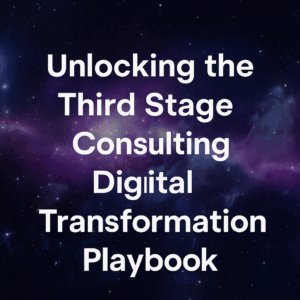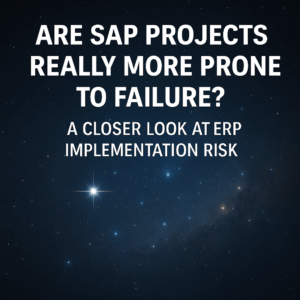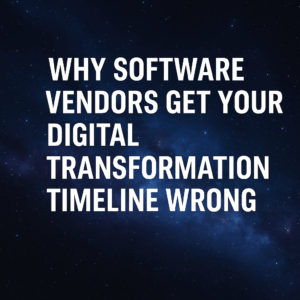In the realm of enterprise resource planning (ERP) implementations, one of the most common pitfalls organizations face is budgetary overruns. Yet, what remains lesser-known is the secret to accurately defining an ERP implementation budget that truly aligns with project needs and expectations. Let’s delve into the nuances of this critical aspect.
An ERP implementation budget should never be crafted hastily or solely based on vendor proposals. These proposals, often crafted with profitability in mind, tend to overlook essential elements and make flawed assumptions about project scope and complexity. To navigate this, organizations must adopt a strategic approach to budgeting, ensuring that all facets of the project are accounted for upfront.
Table of Contents
Toggle1. Look Beyond Vendor Proposals
Vendor proposals are a critical starting point for ERP implementations, offering an initial framework for project costs and timelines. However, these proposals often contain inherent limitations and flawed assumptions that can impact the overall budgetary outlook. For instance, vendors may underestimate the level of customization needed to align the ERP system with specific business processes, potentially leading to additional costs beyond the initial quote. Similarly, assumptions about data migration being straightforward overlook the complexities of data cleansing, mapping, and validation, which can result in unexpected delays and expenses during implementation. Additionally, change management requirements may be downplayed, neglecting the significant effort needed to ensure organizational readiness and user adoption.
Organizations should view vendor proposals as a baseline rather than a definitive estimate of project costs. By approaching these proposals critically, stakeholders can set realistic budget expectations and allocate resources more effectively. It’s essential to account for potential complexities and additional requirements that may arise throughout the implementation process. This proactive approach allows for the development of a contingency budget to address unforeseen challenges and mitigate the risk of budget overruns, ensuring financial stability throughout the project lifecycle.
A collaborative approach with vendors is crucial to refining initial assumptions and developing a more accurate budget. Engaging in open discussions about project requirements and potential challenges enables stakeholders to gain a comprehensive understanding of the implementation scope. By fostering transparent communication and alignment on budgetary considerations, organizations can optimize budget planning and set the stage for a successful ERP implementation journey.
2. Adjust Assumptions Realistically
Defining a realistic ERP implementation budget requires challenging and adjusting assumptions effectively:
- Complete Scope:
Incorporate all project components, including process improvements and comprehensive data migration. Don’t overlook critical tasks like data cleansing and validation, which are essential for a smooth transition to the new ERP system.
- Pace of Change:
Recognize organizational readiness and the pace of change. Rushing decisions or expecting rapid adoption can lead to challenges. Allocate resources for proper training, stakeholder engagement, and change management to ensure successful implementation.
- Strategic Adjustments:
Challenge assumptions about scope and change pace to make informed budget adjustments. Allocate resources wisely for additional training, testing, and change management initiatives to support a realistic and sustainable ERP implementation budget.
By redefining the budgeting process with these considerations, organizations can mitigate risks and optimize resource allocation for a successful ERP implementation.
3. Validate the Vendor Proposal
Validating vendor proposals is a critical step in ensuring the accuracy and feasibility of an ERP implementation budget. To achieve this, organizations must incorporate realistic assumptions and address any incomplete scopes presented in the vendor proposals.
- Fleshing Out Incomplete Scopes:
Vendor proposals often provide a limited view of the project scope, focusing primarily on technical aspects such as software implementation. However, to validate these proposals, it’s essential to flesh out the incomplete scopes by identifying and adding necessary components. This includes tasks like process improvements, data migration, change management, training, and integration efforts. By expanding the scope to encompass these essential elements, organizations can better estimate the true costs and resource requirements of the ERP implementation.
- Aligning Timeline with Organizational Realities:
Another crucial aspect of validating vendor proposals is ensuring that the proposed timeline aligns with organizational realities. Vendors may suggest aggressive timelines that overlook the pace of organizational change or the availability of key stakeholders. It’s imperative to evaluate the feasibility of the proposed timeline based on the organization’s readiness for change, decision-making processes, and resource availability. Adjustments may be needed to accommodate a more realistic timeline that allows for proper planning, testing, and change management activities.
- Importance of Realistic Assumptions:
Incorporating realistic assumptions is fundamental to validating vendor proposals effectively. This involves questioning assumptions made by vendors regarding project scope, timeline, resource requirements, and potential challenges. By challenging and adjusting these assumptions based on organizational insights and industry best practices, organizations can refine vendor proposals to reflect a more accurate depiction of the ERP implementation project.
By validating vendor proposals through the incorporation of realistic assumptions, organizations can enhance budget accuracy, minimize risks, and set the stage for a successful ERP implementation that aligns with organizational objectives and capabilities.
4. Factor in Total Cost of Ownership
When looking at your ERP Implementation Budget, it’s important to consider more than just vendor fees. Additional line items such as change management, user training, integration, and risk mitigation play crucial roles and should be integrated into the budget.
- Change Management:
Allocate resources for stakeholder engagement, communication planning, and training programs to facilitate organizational buy-in and a smooth transition to the new ERP system.
- User Training:
Invest in tailored training programs for different user groups and job roles to ensure proficient use of the new ERP system, reducing post-implementation support needs and enhancing system efficiency.
- Integration:
Plan and budget for connecting the ERP system with existing applications and databases, ensuring seamless data flow and interoperability within the organization’s ecosystem.
- Risk Mitigation:
Proactively address potential challenges by identifying risks, developing contingency plans, and allocating resources to minimize disruptions during implementation.
By incorporating these additional line items into the budget, organizations can achieve a comprehensive and realistic view of the ERP implementation’s total cost, ultimately maximizing project success and business outcomes.
5. Consider the Cost of Risk
The cost of risk in ERP implementation budgets is often underestimated but can have significant consequences. While initial implementation expenses might seem manageable, overlooking critical aspects like change management or data migration can lead to disruptive issues after the ERP system is live. These post-implementation disruptions can ultimately result in higher costs that far exceed any savings achieved during the implementation phase.
Investing in robust change management is crucial to ensuring that organizational transitions are smooth and effective. Similarly, comprehensive data migration strategies can prevent data-related issues that could impact business operations post-implementation. By acknowledging and addressing the potential risks early on, organizations can avoid costly disruptions and optimize the long-term benefits of their ERP investment.
Realistic ERP Implementation Budget
Defining a realistic ERP implementation budget demands meticulous planning and a holistic approach. By moving beyond vendor proposals, adjusting assumptions realistically, and factoring in the total cost of ownership, organizations can set themselves up for ERP success without falling victim to budgetary surprises. This proactive stance ensures that the ERP implementation budget stays on track but also makes sure the project delivers tangible business value.

How Can We Help
At Third Stage Consulting, we’re committed to helping organizations navigate the complexities of digital transformation, including ERP Implementation Budgets. Whether you’re embarking on a new transformation journey or seeking to optimize existing processes, our team is here to support you every step of the way.





